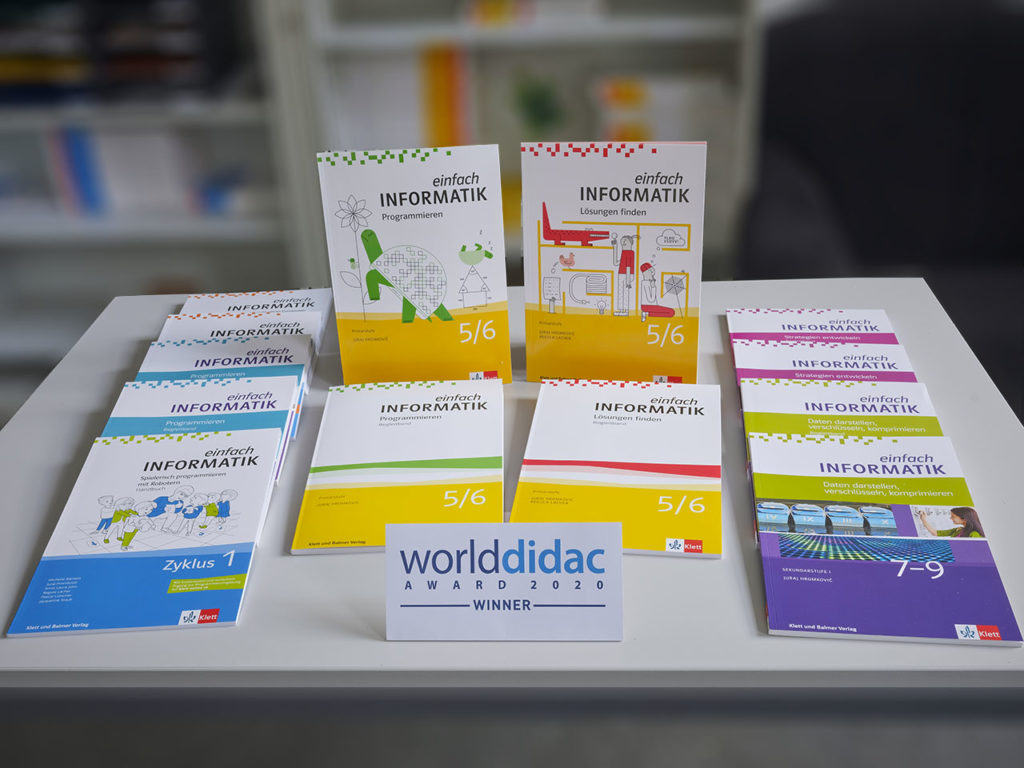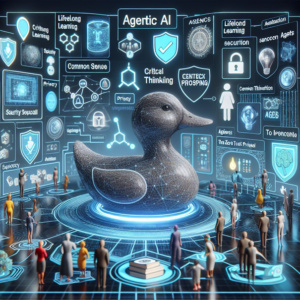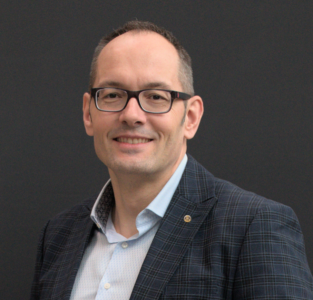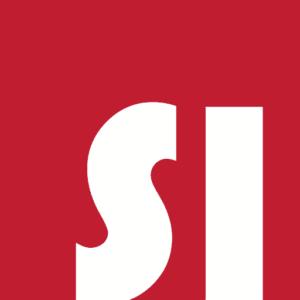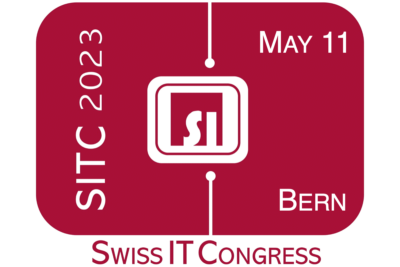For a short time now, the subject of computer science has been integrated into everyday school life. Teaching the informatics way of thinking as the task of this new school subject is the goal of the ETH Zurich Training and Advisory Center, ABZ. The focus of the lessons is on the development of relevant computer science concepts. In the process, learners should learn to understand, control and help shape the technical world designed by humans. They become capable of acting informatically, they should internalize the constructive way of thinking of this technical discipline and, if possible, transfer it to other technical but also non-technical subject areas. For example, computer science instruction promotes the ability to communicate in the linguistic area or the ability to think abstractly and problem-solving in the mathematical area. Ideally, such computer science instruction would inspire enthusiasm for computer science and technical professions; in any case, it prepares students for everyday digital life!
It is therefore not surprising that the new teaching aid series “einfach INFORMATIK”, developed at the ABZ in collaboration with the PHGR and practicing teachers, has received the Worlddidac Award 2020. This series of teaching aids is the first teaching aid for computer science available to Switzerland that does not move on the surface of the use of digital technology, but rather promotes the creativity of children and young people and teaches them to create and invent.
Elke Bülow talks to Regula Lacher and Jacqueline Staub, authors and developers of programming and learning environments, who have contributed significantly to the success of this textbook series.
At this year’s Worlddidac evaluation, “einfach INFORMATIK 5/6” was rated as pedagogically valuable and innovative. Congratulations on the prestigious Worlddidac Award 2020!
For a short time now, the subject of computer science has been integrated into everyday school life. Teaching the informatics way of thinking as the task of this new school subject is the goal of the ETH Zurich Training and Advisory Center, ABZ. The focus of the lessons is on the development of relevant computer science concepts. In the process, learners should learn to understand, control and help shape the technical world designed by humans. They become capable of acting informatically, they should internalize the constructive way of thinking of this technical discipline and, if possible, transfer it to other technical but also non-technical subject areas. For example, computer science instruction promotes the ability to communicate in the linguistic area or the ability to think abstractly and problem-solving in the mathematical area. Ideally, such computer science instruction would inspire enthusiasm for computer science and technical professions; in any case, it prepares students for everyday digital life!
It is therefore not surprising that the new teaching aid series “einfach INFORMATIK”, developed at the ABZ in collaboration with the PHGR and practicing teachers, has received the Worlddidac Award 2020. This series of teaching aids is the first teaching aid for computer science available to Switzerland that does not move on the surface of the use of digital technology, but rather promotes the creativity of children and young people and teaches them to create and invent.
Elke Bülow talks to Regula Lacher and Jacqueline Staub, authors and developers of programming and learning environments, who have contributed significantly to the success of this textbook series.
At this year’s Worlddidac evaluation, “einfach INFORMATIK 5/6” was rated as pedagogically valuable and innovative. Congratulations on the prestigious Worlddidac Award 2020!
INTERVIEW
Elke Bülow: The textbook series for primary level 5/6 for learners and teachers is entitled “einfach INFORMATIK”. Why did you choose this title?
Regula Lacher: The title was intended to alleviate the fears that are often associated with the introduction of a new subject. The teaching materials show how to bring the computer science way of thinking into schools in a way that is understandable, descriptive, and very enjoyable to learn and teach.
Jacqueline Staub: Computer science was only recently introduced into the Swiss school system as part of the Curriculum 21 school reform. As a result, many teachers are currently faced with the challenging task of teaching a subject that they themselves never attended as part of their own school education. This situation provides fertile ground for fears and worries that can accompany technical terms such as “programming” or “cryptography”. In the “einfach INFORMATIK” series of teaching aids, teachers will find a selection of classic computer science topics that are, however, presented in an appealing and age-appropriate manner and arouse curiosity for more. Computer science is presented authentically, but always remains accessible and understandable for the target level. The content is therefore nothing more and nothing less than simple computer science, didactically carefully prepared.
Bülow: Computer science topics are now mandatory in the school curriculum. Your goal is to contribute to the process of introduction. What distinguishes your teaching materials from others?
Staub: With the introduction of computer science into the school system, children and young people are given the opportunity to study the man-made world of technology in detail and to actively engage with it. One problem is that computer science is evolving very rapidly, with new and even more sophisticated technologies emerging every year. We believe that a lasting learning effect can sometimes be achieved by having learners not only memorize the finished products of science, but go through its development process from scratch themselves. Our teaching materials start with the roots of computer science (in some cases several millennia before today) and then allow learners to gain the same insights as the experts of the time and continuously improve their approaches – they are on the tracks of the development of the computer science mindset itself. Something that distinguishes the “einfach INFORMATIK” series of teaching aids, then, is a continuous spiral approach, both within the individual teaching aids and across the entire series of teaching aids, which will soon cover all grades of elementary school.
Lacher: We don’t teach how to use IT, we don’t teach factual knowledge, and we don’t just touch on IT topics on the surface. We let the children discover, develop, construct and examine the products of their work for their properties or functionalities. This creates lasting knowledge and high motivation. We have carried out projects with more than 15,000 children using the teaching materials, and our main problem was and is sending the children to break or home – they are so engrossed in their work and don’t want to stop until they have finished it! The children’s concentration is incredibly high in this process.
Bülow: Block-based programming is the focus for many at the primary level. However, you start text-based programming in the 5th grade. Why is that and what advantage do you see in it?
Staub: Actually, a lot of attention is being paid to this question at the moment. However, much more important than the question of whether to use a block-based or a text-based interface is the question of what you are doing it for. We understand programming as a form of communication: programmers succeed in controlling a machine by learning the language of the computer. This language is characterized by a high degree of precision; machines have no human intelligence and can be powerfully confused by even simple typing errors. This demand for precision is a fundamental characteristic of programming, and by the time of the Matura at the latest, learners should be able to handle it and be capable of writing simple programs in a text-based environment. Obviously, the same demand cannot be made on all learners: Young programmers who can neither read nor write, let alone know how to use a keyboard, would undoubtedly be overwhelmed by this. So at the lower end of the spectrum, starting with a block-based environment makes perfect sense. Somewhere between these two endpoints, the transition from block- to text-based programming takes place. We decided on a comparatively early transition, as soon as typing on the keyboard is no longer too much of a problem, and we have had very good experiences with this approach so far. Few children have problems using the text-based environment thanks to features such as built-in and automatic spell-checking.
Lacher: You can teach block-based or text-based successfully. It depends more on what your goals are in teaching. If you teach block-based, you can’t have syntactical (grammatical) errors or typos. A program is nothing more than a grammatically correct text in a programming language. From the perspective of language teaching, block-based teaching means moving colored words and sentences around instead of teaching writing. In other words, the system ensures that there are no errors. But what if the goal is for children to be able to write grammatically correctly, and for them to make mistakes and learn from them? In addition, in the existing block-based languages, children do not manage to find and correct logical (continuous) errors. In our programming environments, the learning platform supports children in finding logical errors on their own. Correcting programs is just as important a basic skill as building programs.
Bülow: Didactically, you follow Jean Piaget’s constructivism, which distinguishes your approach from other teaching tools. More specifically, your didactic motto is “learning by getting things to work”, what does that mean exactly?
Lacher: It means – and not just in programming – building or designing something through independent, constructive action and then examining the product of one’s own work, reflecting on it and discussing it with others. On the one hand, this discussion helps to find solutions for mistakes, but it is even more important to generate new motivation for even better products. In this way, children naturally learn to create ever new and improved products and to set new goals for themselves. At the same time, the children realize that you can learn from mistakes.
Staub: Learning is an iterative process and, of course, programming is no different. In programming lessons, solutions to given problems are described as programs that can then be executed and tested directly on the computer. However, it is not uncommon for the first solution to contain errors that have to be weeded out over several iterations until a program is finally available that shows the intended effect. The goal of programming instruction is not to try to find the “one perfect solution” right away, but rather to find one of usually many different ways to the goal. The desired result is worked out iteratively over several stages. According to the motto “the path is the goal.
Bülow: Your textbooks enable children to learn on their own responsibility and in a self-determined way, step by step. Can these competencies have an impact on other subjects? Are there any concrete examples?
Lacher: The strongest connection is to language, mathematics and technology. Technology is something you learn to control and help develop. At the most basic level, math and computer science have the same objectives – to learn to abstract (to map reality simplified into the language of symbols) and to develop problem-solving skills. The interface with language is multidimensional. Computer scientists specialize in developing scripts (secret writing, number representations) and programming languages to describe activities (that we want to automate), which are all languages. Our teaching materials allow children to help build the programming language (introduce new words) and to try it out while programming. In this way, they realize that languages are not static, but can adapt to a need and thus evolve. In which language classes do children get the chance to develop and try out a language?
Staub: In general, the aim of our textbooks is to link computer science as closely as possible with other school subjects. Both language and mathematics lessons can be wonderfully combined with computer science: From topics such as cryptography (the development and cracking of secret scripts) to programming (the development of one’s own language in order to communicate with the computer), topics are repeatedly covered that have a cross-curricular character and can thus definitely add value to other subjects. Whether and to what extent these connections are actively lived out in the classroom, however, depends on the teacher, who bears a great responsibility in this respect.
Bülow: Can we assume that this individual, self-determined learning process, to which the children are introduced by you, could make the teacher “dispensable”? Is the teacher then more of a facilitator or, to put it another way, what is the teacher’s role in this process?
Lacher: The teacher is clearly at the center and becomes even more important than with other teaching aids. The teacher guides, directs the children’s activities and provides individualized support. Because we assume that the teachers have not had this subject in their own training, we include not only didactic aspects but also subject-specific knowledge in the accompanying volumes. These accompanying volumes are therefore also more comprehensive than the student volumes. They make the teachers independent and accompany them throughout the lessons.
Staub: The teacher is and remains an important part of school learning, although the role of the teacher in programming lessons is actually a little different than usual: In many disciplines, the teacher has the role of judging the children’s solutions and deciding whether they are correct. This role of “judge” is eliminated in programming because solutions (in our case, graphical patterns) are so easy to check that each child can control his or her own solution. This motivates exploratory learning, because mistakes have no negative consequences for the children. The question of correctness gives way to the two questions of why a given solution does not do what is expected, or how an already working program could be improved. What is important here is that the learning process is always at the center. The children work individually and at their own pace, while the teacher has the opportunity to observe the learning process of individual children and to support their offspring individually. All in all, the teacher still has an important role to play, because he or she is responsible for coordinating the learning process of his or her class, motivating it and supporting it individually.
Bülow: Data security is a big topic today. What are you doing in this area?
Staub: In terms of data security in our programming environment, we take a four-pronged approach. First, we implement and manage our learning environments ourselves. In this way, we control that no sensitive data gets into the wrong hands. This clearly sets us apart from other teaching tools that typically use third-party learning platforms and thus have no control over where, how and what data is stored. Well-known programming platforms such as Scratch or Blockly are developed and managed in the USA, where data protection is not generally and comprehensively regulated compared to Switzerland. Secondly, we make sure that no personal data is stored on our server. This means that while students are able to save solutions online and access them again later, we are not able to infer the identity of a child based on this data, as name, email, date of birth and address are not known. Thirdly, through our offline environment, we offer all users the possibility to work completely anonymously and not leave any traces. The fourth and last point: After the children have worked through “simply INFORMATIK 5/6 – finding solutions” (chapter 2), they are able to develop their own secret scripts and thus, in case of doubt, ensure the protection of their data on their own.
Laugh: Much more than others! We sensitize the children to the topic and show them the possible security measures. But we go much further: we trace the 4000-year-old history of data security and teach the children important concepts of building cryptosystems in an age-appropriate way. Thus, the children work creatively and develop their own new ciphers that the world has not yet seen. The children have fun composing secret messages for each other, or even better, cracking a ciphertext to which they have not been given a key. By taking the approach that the children follow the historical development, they can understand what is feasible and what is not.
Bülow: Do you think you’ll get all kids equally excited about STEM subjects with the teaching material?
Lacher: We are not aiming to make computer scientists out of all children. But we do want to awaken in all children an enthusiasm for constructive, engineering approaches. We want the children to discover this talent within themselves. These children will find in their professions – no matter what kind they will be – that more and more is being automated. None of these children will be able to succeed in their professions without understanding automation. So it is important that all children receive a basic knowledge of this. In addition, our experience with more than 15,000 children in more than 550 schools shows that the gender problem does not exist in the use of our teaching material.
Staub: Two points: (i) One of the most impressive experiences I’ve had over the years has been teachers coming up to me at the end of a project and telling me that programming gave them a different perspective on some students. Often they say there is one or the other child who is normally rather unremarkable or sometimes maybe even classified as weak. Some of these children literally blossom through programming and display unimagined eagerness, joy and concentration. So programming classes can definitely help children find an approach to STEM subjects that they didn’t have before. (ii) Computer science education can also help with regard to gender roles. Unfortunately, we still live in a time where the stereotype of a computer scientist is undoubtedly a man. However, our experience shows that girls and boys are equally motivated to program and that no differences in performance can be attributed to a child’s gender. It is good to start teaching computer science at an early age and thus ensure that no stereotypes can arise. Hopefully, this will educate a new generation in which both girls and boys will be able to pursue a path in science, mathematics, or even computer science without hesitation and without being put off by old stereotypes.
Thank you very much and congratulations again and good luck for the future!
_____
Regula Lacher first did an apprenticeship as a physics lab technician, then studied geography and thus knows the dual Swiss education system from her own experience. Her interest in education and technology led her to teach computer science concepts.
Jacqueline Staub is a PhD student at the Chair of Information Technology and Education at the ETH Zurich and works at the PH Graubünden as a research assistant as well as a computer science lecturer. She holds a teaching diploma for Matura schools in computer science from ETH Zurich. Since 2011, she has been working as a teaching supervisor and assistant on the PrimaLogo project, for which she developed the browser-based logo programming environment XLogoOnline as part of her computer science master’s thesis at ETH Zurich. This environment has been used throughout Switzerland since 2016 and is geared towards programming lessons at elementary school.
Regula Lacher: The title was intended to alleviate the fears that are often associated with the introduction of a new subject. The teaching materials show how to bring the computer science way of thinking into schools in a way that is understandable, descriptive, and very enjoyable to learn and teach.
Jacqueline Staub: Computer science was only recently introduced into the Swiss school system as part of the Curriculum 21 school reform. As a result, many teachers are currently faced with the challenging task of teaching a subject that they themselves never attended as part of their own school education. This situation provides fertile ground for fears and worries that can accompany technical terms such as “programming” or “cryptography”. In the “einfach INFORMATIK” series of teaching aids, teachers will find a selection of classic computer science topics that are, however, presented in an appealing and age-appropriate manner and arouse curiosity for more. Computer science is presented authentically, but always remains accessible and understandable for the target level. The content is therefore nothing more and nothing less than simple computer science, didactically carefully prepared.
Bülow: Computer science topics are now mandatory in the school curriculum. Your goal is to contribute to the process of introduction. What distinguishes your teaching materials from others?
Staub: With the introduction of computer science into the school system, children and young people are given the opportunity to study the man-made world of technology in detail and to actively engage with it. One problem is that computer science is evolving very rapidly, with new and even more sophisticated technologies emerging every year. We believe that a lasting learning effect can sometimes be achieved by having learners not only memorize the finished products of science, but go through its development process from scratch themselves. Our teaching materials start with the roots of computer science (in some cases several millennia before today) and then allow learners to gain the same insights as the experts of the time and continuously improve their approaches – they are on the tracks of the development of the computer science mindset itself. Something that distinguishes the “einfach INFORMATIK” series of teaching aids, then, is a continuous spiral approach, both within the individual teaching aids and across the entire series of teaching aids, which will soon cover all grades of elementary school.
Lacher: We don’t teach how to use IT, we don’t teach factual knowledge, and we don’t just touch on IT topics on the surface. We let the children discover, develop, construct and examine the products of their work for their properties or functionalities. This creates lasting knowledge and high motivation. We have carried out projects with more than 15,000 children using the teaching materials, and our main problem was and is sending the children to break or home – they are so engrossed in their work and don’t want to stop until they have finished it! The children’s concentration is incredibly high in this process.
Bülow: Block-based programming is the focus for many at the primary level. However, you start text-based programming in the 5th grade. Why is that and what advantage do you see in it?
Staub: Actually, a lot of attention is being paid to this question at the moment. However, much more important than the question of whether to use a block-based or a text-based interface is the question of what you are doing it for. We understand programming as a form of communication: programmers succeed in controlling a machine by learning the language of the computer. This language is characterized by a high degree of precision; machines have no human intelligence and can be powerfully confused by even simple typing errors. This demand for precision is a fundamental characteristic of programming, and by the time of the Matura at the latest, learners should be able to handle it and be capable of writing simple programs in a text-based environment. Obviously, the same demand cannot be made on all learners: Young programmers who can neither read nor write, let alone know how to use a keyboard, would undoubtedly be overwhelmed by this. So at the lower end of the spectrum, starting with a block-based environment makes perfect sense. Somewhere between these two endpoints, the transition from block- to text-based programming takes place. We decided on a comparatively early transition, as soon as typing on the keyboard is no longer too much of a problem, and we have had very good experiences with this approach so far. Few children have problems using the text-based environment thanks to features such as built-in and automatic spell-checking.
Lacher: You can teach block-based or text-based successfully. It depends more on what your goals are in teaching. If you teach block-based, you can’t have syntactical (grammatical) errors or typos. A program is nothing more than a grammatically correct text in a programming language. From the perspective of language teaching, block-based teaching means moving colored words and sentences around instead of teaching writing. In other words, the system ensures that there are no errors. But what if the goal is for children to be able to write grammatically correctly, and for them to make mistakes and learn from them? In addition, in the existing block-based languages, children do not manage to find and correct logical (continuous) errors. In our programming environments, the learning platform supports children in finding logical errors on their own. Correcting programs is just as important a basic skill as building programs.
Bülow: Didactically, you follow Jean Piaget’s constructivism, which distinguishes your approach from other teaching tools. More specifically, your didactic motto is “learning by getting things to work”, what does that mean exactly?
Lacher: It means – and not just in programming – building or designing something through independent, constructive action and then examining the product of one’s own work, reflecting on it and discussing it with others. On the one hand, this discussion helps to find solutions for mistakes, but it is even more important to generate new motivation for even better products. In this way, children naturally learn to create ever new and improved products and to set new goals for themselves. At the same time, the children realize that you can learn from mistakes.
Staub: Learning is an iterative process and, of course, programming is no different. In programming lessons, solutions to given problems are described as programs that can then be executed and tested directly on the computer. However, it is not uncommon for the first solution to contain errors that have to be weeded out over several iterations until a program is finally available that shows the intended effect. The goal of programming instruction is not to try to find the “one perfect solution” right away, but rather to find one of usually many different ways to the goal. The desired result is worked out iteratively over several stages. According to the motto “the path is the goal.
Bülow: Your textbooks enable children to learn on their own responsibility and in a self-determined way, step by step. Can these competencies have an impact on other subjects? Are there any concrete examples?
Lacher: The strongest connection is to language, mathematics and technology. Technology is something you learn to control and help develop. At the most basic level, math and computer science have the same objectives – to learn to abstract (to map reality simplified into the language of symbols) and to develop problem-solving skills. The interface with language is multidimensional. Computer scientists specialize in developing scripts (secret writing, number representations) and programming languages to describe activities (that we want to automate), which are all languages. Our teaching materials allow children to help build the programming language (introduce new words) and to try it out while programming. In this way, they realize that languages are not static, but can adapt to a need and thus evolve. In which language classes do children get the chance to develop and try out a language?
Staub: In general, the aim of our textbooks is to link computer science as closely as possible with other school subjects. Both language and mathematics lessons can be wonderfully combined with computer science: From topics such as cryptography (the development and cracking of secret scripts) to programming (the development of one’s own language in order to communicate with the computer), topics are repeatedly covered that have a cross-curricular character and can thus definitely add value to other subjects. Whether and to what extent these connections are actively lived out in the classroom, however, depends on the teacher, who bears a great responsibility in this respect.
Bülow: Can we assume that this individual, self-determined learning process, to which the children are introduced by you, could make the teacher “dispensable”? Is the teacher then more of a facilitator or, to put it another way, what is the teacher’s role in this process?
Lacher: The teacher is clearly at the center and becomes even more important than with other teaching aids. The teacher guides, directs the children’s activities and provides individualized support. Because we assume that the teachers have not had this subject in their own training, we include not only didactic aspects but also subject-specific knowledge in the accompanying volumes. These accompanying volumes are therefore also more comprehensive than the student volumes. They make the teachers independent and accompany them throughout the lessons.
Staub: The teacher is and remains an important part of school learning, although the role of the teacher in programming lessons is actually a little different than usual: In many disciplines, the teacher has the role of judging the children’s solutions and deciding whether they are correct. This role of “judge” is eliminated in programming because solutions (in our case, graphical patterns) are so easy to check that each child can control his or her own solution. This motivates exploratory learning, because mistakes have no negative consequences for the children. The question of correctness gives way to the two questions of why a given solution does not do what is expected, or how an already working program could be improved. What is important here is that the learning process is always at the center. The children work individually and at their own pace, while the teacher has the opportunity to observe the learning process of individual children and to support their offspring individually. All in all, the teacher still has an important role to play, because he or she is responsible for coordinating the learning process of his or her class, motivating it and supporting it individually.
Bülow: Data security is a big topic today. What are you doing in this area?
Staub: In terms of data security in our programming environment, we take a four-pronged approach. First, we implement and manage our learning environments ourselves. In this way, we control that no sensitive data gets into the wrong hands. This clearly sets us apart from other teaching tools that typically use third-party learning platforms and thus have no control over where, how and what data is stored. Well-known programming platforms such as Scratch or Blockly are developed and managed in the USA, where data protection is not generally and comprehensively regulated compared to Switzerland. Secondly, we make sure that no personal data is stored on our server. This means that while students are able to save solutions online and access them again later, we are not able to infer the identity of a child based on this data, as name, email, date of birth and address are not known. Thirdly, through our offline environment, we offer all users the possibility to work completely anonymously and not leave any traces. The fourth and last point: After the children have worked through “simply INFORMATIK 5/6 – finding solutions” (chapter 2), they are able to develop their own secret scripts and thus, in case of doubt, ensure the protection of their data on their own.
Laugh: Much more than others! We sensitize the children to the topic and show them the possible security measures. But we go much further: we trace the 4000-year-old history of data security and teach the children important concepts of building cryptosystems in an age-appropriate way. Thus, the children work creatively and develop their own new ciphers that the world has not yet seen. The children have fun composing secret messages for each other, or even better, cracking a ciphertext to which they have not been given a key. By taking the approach that the children follow the historical development, they can understand what is feasible and what is not.
Bülow: Do you think you’ll get all kids equally excited about STEM subjects with the teaching material?
Lacher: We are not aiming to make computer scientists out of all children. But we do want to awaken in all children an enthusiasm for constructive, engineering approaches. We want the children to discover this talent within themselves. These children will find in their professions – no matter what kind they will be – that more and more is being automated. None of these children will be able to succeed in their professions without understanding automation. So it is important that all children receive a basic knowledge of this. In addition, our experience with more than 15,000 children in more than 550 schools shows that the gender problem does not exist in the use of our teaching material.
Staub: Two points: (i) One of the most impressive experiences I’ve had over the years has been teachers coming up to me at the end of a project and telling me that programming gave them a different perspective on some students. Often they say there is one or the other child who is normally rather unremarkable or sometimes maybe even classified as weak. Some of these children literally blossom through programming and display unimagined eagerness, joy and concentration. So programming classes can definitely help children find an approach to STEM subjects that they didn’t have before. (ii) Computer science education can also help with regard to gender roles. Unfortunately, we still live in a time where the stereotype of a computer scientist is undoubtedly a man. However, our experience shows that girls and boys are equally motivated to program and that no differences in performance can be attributed to a child’s gender. It is good to start teaching computer science at an early age and thus ensure that no stereotypes can arise. Hopefully, this will educate a new generation in which both girls and boys will be able to pursue a path in science, mathematics, or even computer science without hesitation and without being put off by old stereotypes.
Thank you very much and congratulations again and good luck for the future!
_____
Regula Lacher first did an apprenticeship as a physics lab technician, then studied geography and thus knows the dual Swiss education system from her own experience. Her interest in education and technology led her to teach computer science concepts.
Jacqueline Staub is a PhD student at the Chair of Information Technology and Education at the ETH Zurich and works at the PH Graubünden as a research assistant as well as a computer science lecturer. She holds a teaching diploma for Matura schools in computer science from ETH Zurich. Since 2011, she has been working as a teaching supervisor and assistant on the PrimaLogo project, for which she developed the browser-based logo programming environment XLogoOnline as part of her computer science master’s thesis at ETH Zurich. This environment has been used throughout Switzerland since 2016 and is geared towards programming lessons at elementary school.

